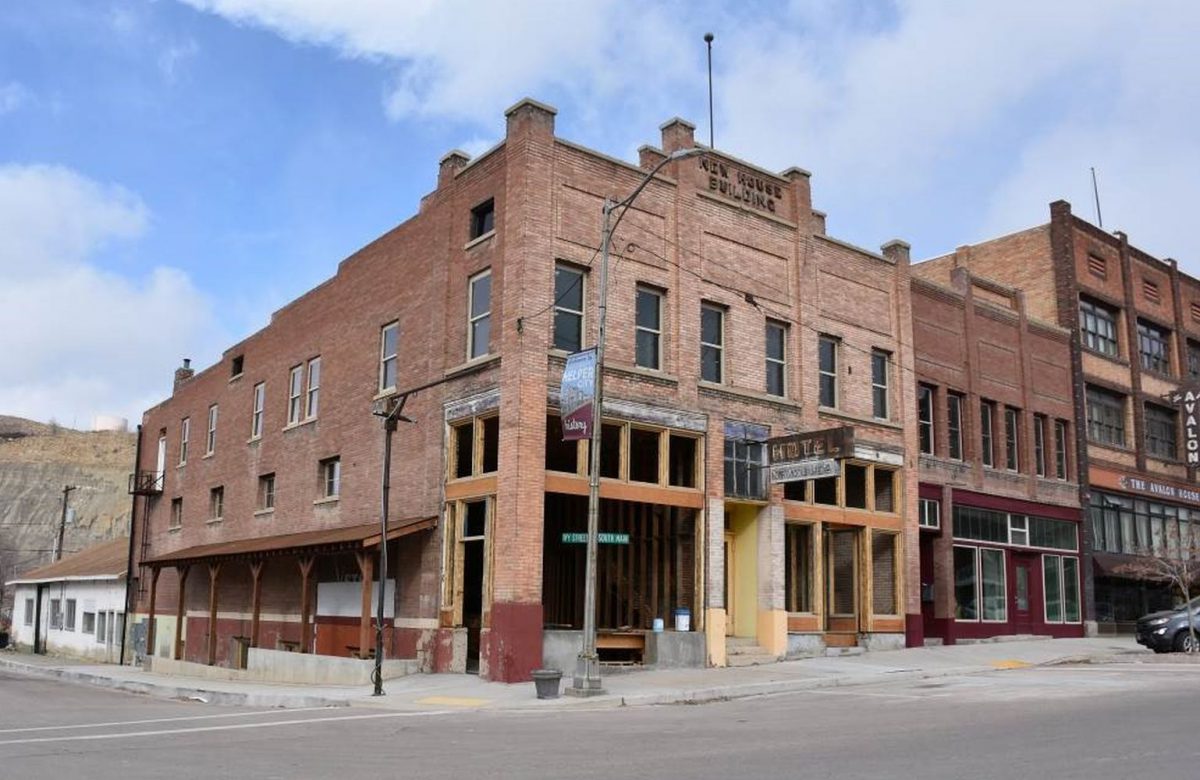The Helper Historic District (Additional Documentation and Boundary Increase) is an update of the original Helper Commercial District (NRIS #79002491). The additional documentation in this nomination changes the district name and expands the period of significance, while also increasing the geographic scope of the historic district boundary. The original district was listed on the National Register of Historic Places in 1979 and included 110 buildings with a period of significance dating from approximately 1875 to 1949. The original district boundary encompassed an 11-block commercial area straddling both sides of Main Street between Janet Street (0 South) and Poplar Street (approximately 400 South) [Map 2]. Of the 110
buildings/structures in the original district, 98 were determined to be contributing resources, and 12, all constructed out-of-period, were determined to be non-contributing resources.
The original nomination described several areas of significance including Architecture, Commerce, Education, Politics/Government, Religion, Social/Humanitarian, Transportation, Recreation and Immigration. The areas were later defined by NPS as Commerce, Transportation, Entertainment/Recreation, Asian, Education, European, Politics/Government, Architecture, Religion and Social History. Although significance was not categorized by Criterion, the areas indicate that the Helper Historic District was eligible under Criteria A and C. The additional information provided here for the boundary increase more clearly defines the areas of significance applicable to both the existing district and the additional properties within the expanded boundary. It also defines the period of significance for the expanded district as 1896 to 1968. This nomination adds 288 contributing and 240 non-contributing buildings, 3 contributing and 2 non-contributing structures for a total of 533 resources.
The Helper Historic District Boundary Increase is significant under Criteria A and C. Although the history of Helper begins with the establishment of the railroad through Helper in 1883, the period of significance begins in 1896 which is the construction date of the Mary Egan House, 374 South Main Street, the oldest remaining building in Helper City [Photograph 9]. The period of significance ends in 1968, which is the date the last bituminous coal mine near Helper ceased operations, removing the main economic driver for Helper’s economy. Under Criterion A, the district has local significance in the areas of Transportation, Community Planning and Development and Commerce for the unique founding of Helper, Utah as a transportation center to support the locomotives needed to transport bituminous coal traversing Price Canyon. After the railroads were completed, multiple Carbon coal mines were developed, leading to Helper’s more sustainable development after 1906 as an entertainment and commercial district for railroad workers and miners, often recent immigrants from Europe and Asia. Helper’s late founding, mix of immigrants among both business owners and consumers, created commercial and social structures unique to Utah that was primarily settled by a homogeneous group. The Helper Historic District has significance under Commerce, Entertainment/Recreation, European and Asian Ethnic Heritage and Social History for the unique conditions created by the mining district and commercial, entertainment and residential community development that occurred in Helper. When the D&RGW Railroad completed its rail line from Colorado through Helper and Price Canyon up to Salt Lake City to exploit nearby Carbon County coal resources in 1883, the company established the Helper rail yard and locomotive maintenance facilities to support the additional “helper” locomotives needed to allow trains to traverse up the steep Price River Canyon.7 There was no existing town, so the company created Helper’s infrastructure including rail facilities and company housing to support its operations. Helper substantially expanded after D&GRW opened area coal mines.8 After 1906, the D&RGW railroad lost its monopoly on Carbon County coal transportation and several independent coal mines began operating, including those in Kenilworth Canyon 4.7 miles northeast of Helper and Spring Canyon west of Helper. In 1912, the Utah Railway Company constructed competing rail facilities on the west side of the Price River to support several coal mines.9 Each railroad and mining company developed its own housing tract in Helper, creating a unique layout widely divergent from typical single-entity company towns, which typically owned the real estate where they placed company housing. The railroad shops and mines required an extensive workforce, which were often staffed with recent immigrants, who during this historical period came from Southern and Eastern Europe, allowing Helper to became one of the largest and most diverse ethnic enclaves in Utah.10 The railroads and surrounding coal mines allowed Helper to develop a new role in the 1920s as a commercial and recreational hub for miners and their families for several decades.
The Helper Historic District is also significant at the local level under Criterion C for its architecture and its representation of the three major periods of development influenced by the railroad and coal mining industries and role as a regional commercial hub. The building stock in the area is predominantly early 20th Century vernacular residential and commercial architecture, with a later few architect-designed public buildings. Helper lacks the high-style architecture often built by local industrial and commercial interests, reflecting the distant corporate nature of its primary industries. Helper reflects the largely utilitarian and transitional nature of the railroad and mining industries, with its large stock of unadorned and often movable and relocated residential architecture. Finally, Helper’s architecture reflects the precarious economic status as well as creative designs of its late immigrating residents, with hand-cut stone buildings and structures created mostly by Italian masons. Collectively, the buildings of the district illustrate the shift from Helper’s early company town architecture to a successful regional commercial district.

